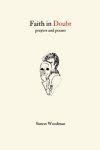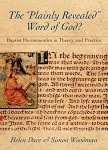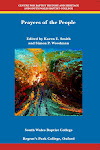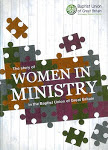Bloomsbury Central Baptist Church, 24 November 2019
Revelation 21.1-10; 21.22-22:2
Isaiah 65.17-25; 66.22-23
Listen to this sermon here:
https://soundcloud.com/bloomsbury-1/a-tale-of-two-cities-from-new-york-to-the-new-jerusalem
It feels like a lifetime ago, and for some people it is,
but, a bit
like (I’m told) the assassination of Kennedy,
those of us
over a certain age will always remember where we were
on the day
of September 11th, 2001.
Surely the
defining moment of the opening years of the twenty-first century
was the
terrible terrorist atrocity perpetrated in New York City,
when two aeroplanes were deliberately flown
into the
twin towers of the World Trade Centre.
The subsequent attacks on the Madrid
train network on 11th March 2004,
and the London public transport
system on 7th July 2005,
whilst not on a comparable scale in terms of their
death-toll,
have
nonetheless acquired similar symbolic importance.
The years 2014–16 saw more people killed by terrorist
attacks in Europe
than all
previous years combined,
with Brussels, Paris, Nice,
Toulouse,
Istanbul, Manchester,
Berlin,
Barcelona, Copenhagen,
St
Petersburg, Stockholm, and London twice more,
all featuring in the list of cities experiencing terrorism
in recent years.
These events have raised many questions,
and
provoked responses that span the globe.
It is interesting to note that the seminal events of New York, Madrid and London
and the
other cities that have followed,
have dominated the international arena
in a way
that other deaths on a similar scale have not.
For example, most of us who travel on buses or the tube,
have a
residual fear stemming from the 2005 London attacks,
in a way that we don’t have a fear of crossing the road,
and yet we
are far more likely to be killed in a traffic accident
than in an
act of terrorism.
It seems that there is something symbolic
about these
attacks on internationally important cities
that
transcends the death-toll statistics,
however
horrifying those statistics may be.
In the popular imagination, these cities
have come
to stand for more than the sum of their parts.
In terms of New York, the
‘Big Apple’ is, for millions of people, more than just a city:
it is a
dream, a symbol of happiness and prosperity;
it
is the gateway to the promised land, to the New World.
Similarly, the World Trade Centre was more than an office
block,
it was a
symbol of Western capitalist success.
Tragic though the deaths in New York in 2001 were,
the
attention that they attracted far exceeded that
attached
to similar levels of death and suffering around the globe
that
do not carry such symbolic power.
This symbolic function of cities,
with their
ability to represent more than the sum of their parts,
is nothing
new.
Since the earliest days of civilization,
cities have
represented the best and the worst of humanity.
They represent both humanity’s greatest achievements
and also
the scene of its greatest evils.
In the book of Revelation, John recognizes this
and uses
the image of two cities
to
represent the best and the worst of humanity.
To this end, he juxtaposes Babylon
and Jerusalem.
Of course, the real city of Babylon
had been
long destroyed by the time Revelation was written:
the great and beautiful city of ancient times
with its
hanging gardens and its impressive architecture stood no more.
No longer was it a place of cruelty and evil,
where
captives were killed for the pleasure of the citizens
with countless hordes watching in fascination
as innocent
people were murdered in front of their eyes.
But Babylon
as an image still lived on in the
Jewish imagination.
It had come to represent all that was evil and corrupt;
to stand
for those aspects of human society
that were
opposed to God’s ideal for humanity.
In Revelation, John uses this image of Babylon
to signify
the satanic tendency of humanity
to construct idolatrous empires
that
challenge the lordship of the one on the throne in heaven.
He uses it as a powerful reminder
that no
matter how great and beautiful human achievements may be,
no
matter how powerful and impressive the cities that are constructed,
evil still
remains a part of the human experience,
raining
death and destruction on innocent people
through the
imperial pretentions
of
those who deny the kingdom of heaven.
In recent years it has been the claim to establish an
Islamic state
that has
grabbed the death-dealing headlines,
but in years gone past the imposition of Christian states
has been
every bit as bloody and coercive.
The image of Babylon
in the book of Revelation
is there to
tell its audience
that there
is nowhere where they are completely safe from the threat of evil.
Even in the great cities,
places that
inspire feelings of safety and security,
people find
no true protection from death and suffering.
John’s deconstruction of the mythology of the imperial city,
through his
identification of Rome as Babylon,
demonstrates that no matter how hard humans may try
to
construct heaven on the earth,
ultimately all that is achieved is idolatry and suffering.
It is against this bleak vision of humanity
that John
gives his audience another picture,
another
image, another city,
in his
description of the new Jerusalem.
Traditionally Jerusalem, the
capital city of Israel,
was
regarded as the city of God,
the place
where the Jews had their focus of worship in the temple.
In Jewish understanding,
Jerusalem represented a
city of hope, a city of peace,
and was the
place where God lived among his people.
Jerusalem,
too, was a city that had come
to stand
for more than the sum of its parts.
In reality it was simply the capital city of Israel,
beset by
fighting and difficulty just like any other human community.
But in the popular mindset, in people’s imaginations,
Jerusalem had come to
stand for a lot more than this.
It became a symbol of hope
that one
day God would right the world’s wrongs,
and that it would itself become a place
where
people would live at peace with their God.
John picks up on this image
and tells
his audience of what he calls the new Jerusalem,
which he depicts as the heavenly alternative
to the city
of Babylon.
He holds before his first-century Roman audience an
alternative reality;
a vision of
a city that subverts everything Babylon
stands for.
To people facing despair at the evil of the world in which
they live,
to those
who fear they are trapped in Babylon
and
will never find their way out,
to those
who look at the world and weep
with
anger and frustration and pain
at
the evil that seems so unavoidable,
the vision of the new Jerusalem presents a hope
that the
world will not always be like this.
For those in John’s churches,
struggling
against the might of Babylon expressed as the Roman Empire,
John’s picture of the people of God as the new Jerusalem
provides an
alternative vision of humanity,
where God
is in his rightful place among his people.
In this way, the vision of the new Jerusalem
gives the
heavenly perspective on the lived earthly reality:
it is God’s
alternative city.
Revelation presents the tantalizing vision of a world
transformed,
a world
with different priorities.
It encourages its audience to persevere and overcome
when
confronted with the true nature of Babylon.
And John invites his readers to see themselves as citizens
of the new Jerusalem,
as citizens
of the dawning kingdom
of God.
He invites them to become participants with Christ
in bringing
this new city
into being.
Those in John’s churches, in this way, become the seeds of
good news
planted
among the ashes of destruction,
freedom fighters of peace
in a world
of fighting and unrest.
To those who look at the world and see Babylon all around,
John
presents the option of saying
that in
Christ, this is not the way it should be.
And he offers these two stark alternative realities,
inviting
his audience to make a choice
as to which
city they will inhabit.
They can either keep their citizenship
in the
attractive, cosmopolitan,
seductive,
exciting,
frightening,
and ultimately satanic city of Babylon,
or they can align themselves with the small and subversive,
with the
hidden and the dangerous,
and start
living as citizens of the new Jerusalem.
But the choice to move citizenship from Babylon to the new Jerusalem
does not
come without its cost.
John’s first century audience
faced both
economic hardship
and
the possibility of persecution and even martyrdom
for taking
their stand against the might of the satanic empire.
Martin Luther King, Jr. took this idea of a battle against
an empire
fought
without bombs, guns and terrorism,
and he applied it to the civil rights struggle
of the mid
twentieth century.
To those who were seeking to use violence against him, he
said:
[T]hrow us in jail and
we will still love you.
Threaten our children and bomb our
homes and our churches
and as difficult as it
is, we will still love you.
Send your hooded perpetrators of
violence
into our communities at
the midnight hours
and drag us out on some wayside road
and beat us and leave us
half-dead,
and as difficult as that is, we will
still love you.
But be assured that we will wear you
down by our capacity to suffer
and one day we will win
our freedom.
We will not only win freedom for
ourselves,
we will so appeal to
your heart and your conscience
that we will win you in the process
and our victory will be
a double victory.[i]
Those who have sought, in any age,
to
establish their version of the kingdom of heaven on the earth
by
the use of force
have
inevitably ended up re-inventing Babylon
in
their own day and age.
This is John’s great insight into the human tendency to
construct empire.
Even those kingdoms which begin with the best of intentions
end up as
idolatrous alternatives to the one on the throne in heaven,
and
are therefore fundamentally satanic.
The battle against such destructive idolatry can, according
to John,
only be won
by those
who
choose to place their citizenship with the new Jerusalem,
and who
work for its establishment on the earth.
As we’ve seen in a recent sermon,
Jesus
compared the coming Kingdom to yeast;
small,
invisible, hard to understand,
and yet
that which ultimately transforms
the
entire batch into bread (Matt. 13.33; Luke 13.20–1).
This call of Jesus finds resonances in the theology of John,
who
encourages his audience to become those
who
participate in the coming of the kingdom
of God to the earth.
The new Jerusalem is described by John
as
descending from heaven to the earth (21.2, 10).
As we saw in an earlier sermon on Revelation,
John has structured
the book rhetorically
to
draw his first-century audience
from
the earth into his vision of heaven.
And here in Chapter 21 he returns them back to the earth
again,
as the
heavenly manifestation of the Church descends to the earth.
However, the way John describes this descent is interesting:
following their
journey with him through the heavenly realm,
when
they finally get back to the earth,
John’s
audience find that everything is different.
At the time of their initial ascent with John
through the
door opened in heaven (4.1),
they were simply those attending the seven congregations of
Asia Minor,
living
under the dominion of Rome,
struggling
in their faith and their worship.
By the time they are returned to the earth at the end of the
vision,
they are
seen to be the new Jerusalem,
the eternal
glorious Church.
Their witnessing of the vision of the destruction of the
satanic empire,
and the
salvation of the nations of the earth which followed it,
has changed everything.
John’s vision has its effect,
transforming
its hearers’ imaginations
and the way
in which they perceive and understand the world.
The first heaven and the first earth have passed away,
and John
has taken his audience to a new understanding of creation
where God and people live in harmony with each other,
where the
hold of death is broken,
and where
suffering has passed.
As you may have noticed in our readings earlier,
John’s
vision of the new heaven and the new earth
draws
on a similar vision from Isaiah (Isa. 65.17; 66.22).
My friend Ian Boxall helpfully comments on this, saying:
[T]his is not to be understood in terms of destroying the old or the
obsolete
in order to replace it
with something completely different
(neither Isaiah nor
John use the language of destruction).
Rather, John sees a profound renewal of that which is already there …[ii]
However, there remains a question
as to
whether this renewal occurs entirely in the future,
or if there
is also a present fulfilment of this vision of transformation.
There are many who would locate this vision in the distant
future,
as the goal
towards which all of human history is heading.
However, against this it is important to recognize that,
as with all
of Revelation’s imagery,
John’s vision of the new heaven and earth
evokes not
simply a future
but also a
present realization.
The one seated on the throne
declares in
the present tense: ‘see, I am making
all things new’ 21.5.
Tom Wright suggests that the New Testament language
of heaven
and earth coming to an end, followed by re-creation,
functions
as a metaphor for socio-political renewal:
He says,
[T]here is virtually no evidence
that Jews were
expecting the end of the space-time universe.
There is abundant evidence that they, like Jeremiah and others before
them,
knew a good metaphor
when they saw one,
and used cosmic imagery
to bring out the full
theological significance
of cataclysmic social
events.[iii]
John’s audience are thus invited to realize
that the
existing world-order already has been destroyed
(cf. 16.17, ‘it is done’),
that Babylon is fallen (cf. 14.8; 18.2),
and that all things are being made new (cf. 21.5).
And they come to this realization when the earth is seen
from heaven’s perspective,
and suddenly
everything is different.
The future hope is therefore seen to be breaking into the
present
through the
faithful witnessing of the faithful
to the
alternative heavenly reality of which they are a part.
In this way, the act of re-creation within John’s scheme
is
presented as an ongoing active present-day activity,
happening on the earth through the
action of the army of the Lamb,
as creation
moves towards its ultimate destination.
In this way the Church becomes the fulfilment
of the
promise to Abraham that all nations would be blessed through him.[iv]
The spiritual heirs of Abraham, the faithful people of God,
sing the
‘new song’, that only they can learn,
of the victory won by Christ on the
cross (14.3; cf. 5.8–10),
and so
proclaim the good news to all nations
that Babylon is fallen
and the way to the new Jerusalem is
open.
Through all this, the challenge that Revelation presents to
its audience
is for them
take up their citizenship in the new Jerusalem,
and become those who witness faithfully
to the
dawning heavenly kingdom.
By John’s understanding,
everything
depends on the faithful saints
persevering with endurance through
tribulation,
as they
demonstrate through their lives
the testimony to the Lamb that was
slain.
It is only as the Church fulfils this calling,
exercised
through suffering and possible martyrdom,
that the
first fruits become the great harvest.
This is John’s bitter-sweet message,
and it lies
at the heart of his great visionary apocalypse.
So, to conclude our series on Revelation, a question
which city
do you belong to, Babylon or New Jerusalem?
Who has your allegiance, Babylon or New Jerusalem?
And, if it
is New Jerusalem,
what does it mean to live as one whose
citizenship
is no longer with any earthly kingdom?
What difference will being a citizen of new Jerusalem make
to how you
vote, how you pray,
how you spend your money, how you relate
to others,
what you do with your time?
Because New Jerusalem only becomes a reality
when we
live it into being,
one day,
one choice at a time.
[i]
Martin Luther King, Jr. speaking to Western
Michigan University
on December 18th 1963. http://www.wmich.edu/library/archives/mlk/transcription.html.
Accessed 7.11.07.
[ii]
Boxall, Revelation, p. 293.
[iii]
N. T. Wright, 1992, The New Testament and the People of God:
SPCK, p. 333.
[iv]
cf. Gen. 18.18; 22.18; 26.4.













